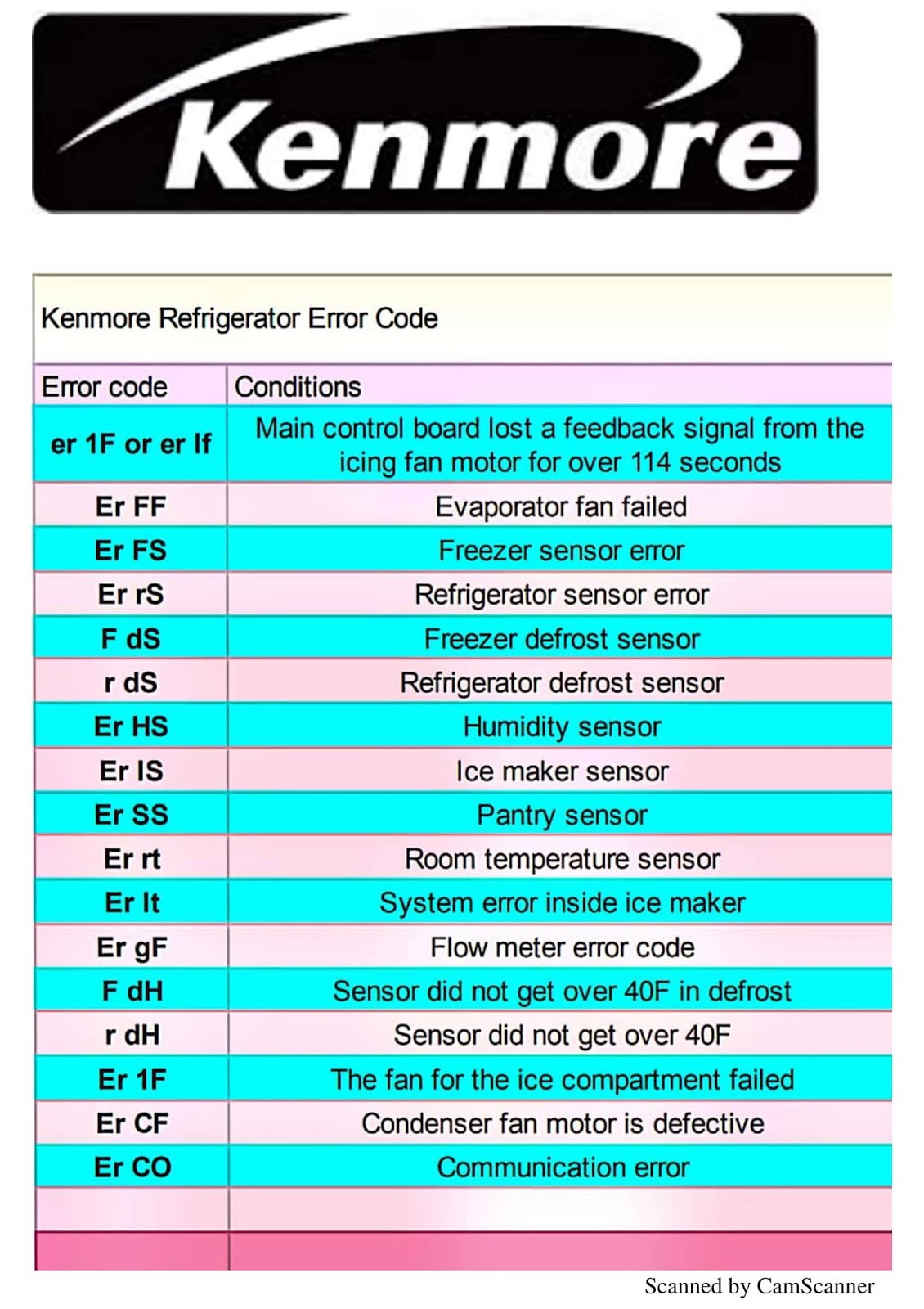1F Error Code Lg Fridge
Experiencing an error code on your refrigerator can be frustrating, especially when it disrupts your daily routine. One such common issue with LG refrigerators is the “1F” or “IF” error code. In this comprehensive guide, we’ll delve into what this error means, its potential causes, and provide detailed, step-by-step solutions to resolve it.
Understanding the 1F Error Code
The “1F” or “IF” error code on LG refrigerators indicates a problem with the ice maker fan. This fan is responsible for circulating cold air from the freezer to the ice maker compartment, ensuring efficient ice production. When the fan malfunctions or is obstructed, it can lead to this error code.
Common Causes of the 1F Error Code
Several factors can trigger the 1F error code:
- Frost or Ice Buildup: Accumulation of frost around the ice maker fan can impede its operation. This buildup often results from warm, moist air entering the freezer, leading to condensation that freezes over time.
- Defective Ice Maker Fan Motor: A malfunctioning fan motor can prevent the fan from operating correctly, resulting in the error code.
- Blocked Air Vents: Obstructions in the refrigerator’s air vents can restrict airflow, causing temperature inconsistencies and potential frost formation around the fan.
- Damaged Door Gasket: A worn or damaged door gasket can allow warm air to seep into the freezer, leading to frost buildup that may affect the fan’s performance.
- Control Board Glitch: Occasionally, a temporary glitch in the refrigerator’s control board can falsely trigger the 1F error code.
Troubleshooting and Solutions
Addressing the 1F error involves a series of steps to identify and rectify the underlying issue. Here’s a detailed guide to help you through the process:
1. Manual Defrost
Purpose: Eliminate any frost or ice buildup around the ice maker fan.
Steps:
- Unplug the Refrigerator: Disconnect the appliance from the power source to ensure safety.
- Empty the Freezer: Remove all contents from the freezer compartment.
- Open the Freezer Door: Leave the door open to allow warm air to circulate.
- Wait: Allow approximately 8 hours for the ice to melt naturally. Placing towels around the base can help absorb any water resulting from the melting ice.
- Clean Up: After defrosting, wipe away any residual moisture.
- Restart: Plug the refrigerator back in and monitor for recurrence of the error.
Note: This method is effective for resolving frost-related issues but may not address underlying causes of frost formation.
2. Inspect and Replace the Ice Maker Fan Motor
Purpose: Ensure the fan motor is functioning correctly.
Steps:
- Safety First: Disconnect the refrigerator from the power source.
- Access the Fan: Depending on your model, you may need to remove the back panel of the freezer compartment. This panel is typically secured with screws or tabs.
- Examine the Fan: Check for visible signs of damage or wear on the fan blades and motor.
- Test the Motor: Use a multimeter to check for electrical continuity. If the motor lacks continuity, it indicates a defect.
- Replace if Necessary: If the motor is faulty, replace it with a compatible part.
Note: Accessing the fan may vary based on the refrigerator model. Consult your user manual for specific instructions.
3. Ensure Unobstructed Air Vents
Purpose: Maintain proper airflow within the refrigerator.
Steps:
- Inspect Vents: Locate the air vents in both the refrigerator and freezer compartments.
- Remove Obstructions: Ensure no food items or debris are blocking the vents.
- Organize Contents: Arrange stored items to allow free airflow.
Note: Blocked vents can lead to temperature inconsistencies, contributing to frost buildup.
4. Examine and Maintain Door Gaskets
Purpose: Prevent warm air from entering the freezer compartment.
Steps:
- Inspect Gaskets: Check the door seals for signs of wear, cracks, or dirt.
- Clean the Seals: Use warm, soapy water to clean the gaskets, ensuring a tight seal when the door is closed.
- Replace if Damaged: If the gaskets are worn or damaged, replace them to maintain an effective seal.
Note: A compromised seal can lead to temperature fluctuations and increased frost formation.
5. Reset the Control Board
Purpose: Address potential glitches in the refrigerator’s control system.
Steps:
- Power Down: Unplug the refrigerator for about 30 seconds.
- Restart: Plug it back in and observe if the error code persists.
Note: If the error continues after a reset, further investigation into the control board may be necessary.
Preventive Measures
To minimize the risk of encountering the 1F error code in the future, consider the following preventive steps:
- Regular Maintenance: Periodically check and clean the ice maker fan, air vents, and door gaskets.
- **Proper Storage

